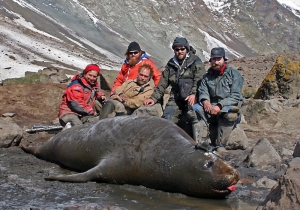Did you know that seals work as research assistants?Seals fitted out with satellite transmitters have collected climate data from the polar regions.

During the recent International Polar Year (2007-2008), deep-diving Arctic and Antarctic seals worked as research assistants for the project “Marine Mammals Exploring the Oceans Pole to Pole” (MEOP). Satellite transmitters and measurement equipment were glued to the seals’ heads and the animals swam thousands of kilometres and dived more than 2000 metres into the ocean depths, collecting data all the way. Every time the seals surfaced to breathe, new data appeared on the computer screens of researchers at the Norwegian Polar Institute. This unique method of data collecting gave the researchers information about the animals’ whereabouts and behaviour in addition to insight on oceanographic parameters in various parts of the world, including ice-filled polar seas that are not easily accessible to humans. The data were used for weather forecasting and climate modelling, and to chart ocean currents. In the south, elephant seals did the “research” and covered major segments of the seas surrounding Antarctica. In the north, hooded seals served as research assistants in the vast sea areas between the North Pole and the coast of Norway. The measurement gear that was glued to the seals’ fur weighs only half a kilo, a fraction of the animals’ weight. When the seals moult – which they do every year – the transmitters fall off. The data the seals gathered are important pieces in the puzzle we must solve to understand what may happen with our climate in the future. MEOP was an international project with participants from ten countries, with the Norwegian Polar Institute at the helm. |
South Pole 1911–2011 is an informational outreach project run by the Norwegian Polar Institute
Contact person:


